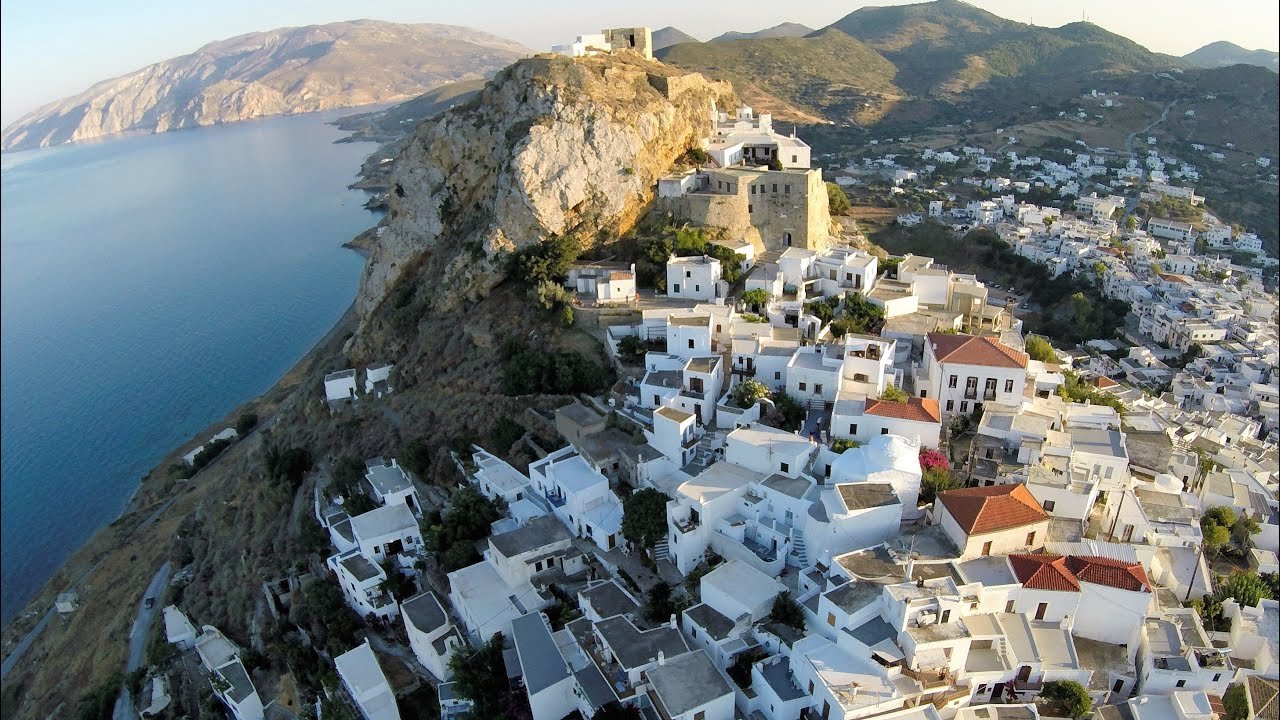Greece
When you think of Greece, what is the first thing that comes to mind?
Perhaps the white and blue painted houses or the picturesque scenery and history the country offers? Some people believe the white and blue houses in Greece are thought to have been painted as a symbol of revolution and independence. Many believe that the white and blue houses were painted to reflect the colors of the Greek flag. Whichever the case may be, it has brought global results and is now popular and recognized worldwide.
Geography
Greece is located in south-eastern Europe. It shares borders with Albania in the northwest, North Macedonia and Bulgaria in the north, and Turkiye in the northeast. Aside from Mount Olympus being the highest peak in Greece, the country has the longest coastline in the Mediterranean with 13,676 km of coastline and numerous islands.
One of the reasons why it’s one of the most popular sailing and yachting destinations is because of its incredible location. Several seas surround Greece, including the Aegean Sea, the Ionian Sea, the Cretan Sea, and the Mediterranean Sea. Shipping has played an enormous role in the country’s economy for many centuries and continues to do so today. With yacht tourism only increasing in popularity, its impact has only grown.
Greece is home to some of the most famous islands in the world, such as Mykonos, Santorini, Corfu, Rhodes, and Crete. However, there are over 2.000 islands, so there is still much to see and do. Most of the islands are located in the shallow waters of the Aegean Sea between Greece and Turkiye. With 18 UNESCO World Heritage Sites including the Temple of Apollo and the Acropolis, Greece boasts an astounding historical legacy.
Climate
The majority of the islands are blessed with a Mediterranean climate characterized by hot, dry summers and mild winters. During the months of June to September, you will feel the Meltemi. A strong northerly wind in the Aegean Sea that usually brings low humidity, clear visibility, and refreshing breezes. It is possible to escape the Meltemi on the Ionian Islands, which have less severe winters than northern Greece. November is when the rains are supposed to start in most areas.
Greek Cuisine
Many would agree that Greek cuisine is one of the world’s healthiest cuisines. Probably one of the main reasons why Greeks live longer. Their eating habits fall under the Mediterranean diet and include dishes of antioxidants, olive oil, vegetables, legumes, and healthy fats. Greeks do not see their breakfast as the most important meal of the day. In this case, they won’t give much effort into it.
Meat is generally not major consumed in comparison to fish. Most common fish plates are served with sardines, anchovies, shrimp, and squid. All meals are enriched with varieties of salads, mezes, and vegetables.
What goes well with these dishes is ‘Ouzo’ the national drink of Greece. ‘Tsipouro’ or ‘Tsikoudia’ are mostly used as an appetizer or as a refreshment. Greece’s wine production is one of the oldest in the world. Some of the regions have been awarded for the quality of the wine. Some Greek islands have specially made recommendable liqueur wines!
Island Groups
The Cyclades are so named because they form a circle (kyklos) around the island of Delos. One of the country’s most significant ancient cities. Naxos is the most fertile island, producing potatoes and other crops for export to Athens and neighboring islands. Many islanders still fish, but tourism is becoming the dominant source of income. Some islands especially Mykonos, Santorini, and Ios have eagerly embraced tourism. Their shores are spread with sun lounges, umbrellas, and watersports equipment. Other islands, such as Andros, Syros, Kea, Serifos, and Sifnos, are less visited by foreigners. Thanks to their proximity to the mainland, they are popular on the weekends. They are the perfect summer retreats for Athenians.
Ios
There’s no denying that most visitors come to party and enjoy the nightlife of Ios. For those who are looking for a more relaxing stay, the island also offers plenty to explore. Beautiful sandy beaches (including Koubara nudist beach), the pretty capital of Chora, and an interesting rocky Mars-like landscape. Ios has not only a cheese factory and an early Bronze Age settlement named Skarkos. But also a Byzantine Paleokastro castle. Additionally, Ios has a tenuous claim to being the burial place of the poet Homer. His tomb is in Plakato in the northeast of Ios. A myth says that there are 365 churches and chapels on the island of Ios – one for each day of the year.

Mykonos
Welcome to the most glamorous island of the Cyclades Islands. With about 30 sandy beaches to offer and perfect crystal clear waters, Mykonos attracts the rich and famous, high-ranked politicians and celebrities, and a couple of curious tourists. The windmills of Mykonos are an attractive photo stop nowadays. They used to be one of the main sources of income before tourism started to kick off. YES, it’s thé party destination with exclusive beaches, watersports, and the best nightlife. But the island also has a few interesting Churches, Monasteries, and Museums waiting for you to discover.

Paros
Paros is an attractive island with softly contoured terraced hills culminating in Profitis Ilias Mountain (770m). The island is famous for the pure-white marble from which it prospered during the Early Cycladic Period. Paros is now the main ferry hub for the Greek Islands. The relatively unspoiled island of Antiparos, 1km southwest of Paros, is easily accessible. Above all a popular holiday spot for families with young kids. Mainly in July and August, the Jersey Tiger moths almost enshroud the copious foliage at Petaloudes (Valley of the butterflies) which is 8 km south of Parikia. Naoussa is one of the prettiest villages in the Cyclades with remainings of a Venetian castle and golden beaches.

Santorini
Santorini officially known as Thira is regarded by many as the most spectacular and unique of all Greek Islands. Santorini is the southernmost volcanic island of the Cyclades. As a major tourist destination, it has good connections with Piraeus and Thessaloniki on the mainland as well with Crete. Grapes thrive in Santorini’s volcanic soil, and the island’s wines are famous all over Greece and beyond. The island is famous for its magical sunsets. The most photographed and on many people’s bucket lists is the sunset of Oia. With blue dome churches and whitewashed buildings in the background of every picture. The Red, white, and black beaches of Santorini are worth the visit. If you love hiking, there are adventurous hiking paths to explore with again amazing views. It is the perfect way to experience the local life on Santorini.

Syros
This island is not very famous or much visited, due to many tourists coming to Syros mostly to change ferries. But experience the unexpected of this beautiful island and explore the hidden gem of the Cyclades Islands! Ermoupolis is the capital of the island. It will amaze you with marbled neoclassical buildings, and Venetian mansions. The Apollon Theater, the Town Hall, Miaouli Square, Agios Nikolaos Church, Cathedrals, Monasteries, and historical Museums are worth the visit. The picturesque streets of Ano Syros are perfect to get lost in. The beaches of Kini and Vari or just lovely for a relaxing day at the beach. Syros is perfect for families and couples who enjoy peace and calmness.

Strung along the coast of western Turkey like jewels upon an aquamarine sea, the Dodecanese archipelago is closer to Asia Minor than mainland Greece. Because of their strategic and vulnerable position, they have encountered a greater list of invasions and occupations than the rest of Greece. The name Dodecanese (‘Dodecka’ means 12 in Greek) derives from the time of the Ottoman Empire when 12 of the 18 islands were granted special privileges for having willingly submitted to the new Ottoman overlords. With Rhodes being the largest island of the Dodecanese, Kos, and Patmos fulfill a more important role historically.
Kalymnos
Kalymnos, only 2,5km South of Leros, is a mountainous, arid island with fertile valleys. The island is renowned as the ‘sponge-fishing island’. With the beginning of tourism, rock climbing became very popular in Kalymnos and today the island offers more than 3000 climbing routes and every year gains more admiration with the Kalymnos Climbing Festival. East of Plateia Kyprou, is the Archaeological Museum with objects from the Neolithic and Bronze Ages. For more interest in the history of the island, you can also visit the Nautical and Folklore Museum. Kalymnos has beautiful beaches with crystal clear water and is the perfect place to go diving! The lovely, tranquil, and traffic-free islet of Telendos is just 10 minutes from Kalymnos and is just wonderful.

Kos
Kos is the third-largest island of the Dodecanese and one of its most fertile and well-watered. It lies only 5km from the Turkish Peninsula of Bodrum. The father of medicine, Hippocrates was born and lived on the island and made Kos famous throughout the Greek world, you can visit the Three of Hippocrates. Asclepeion is the greatest archaeological site on the island and together with the Ancient Agora worth the visit. Kos Town is the island’s capital and main port. It’s modern, picturesque, and lush, with an abundance of palms, pines, oleander, and hibiscus. The Castle of the Knights dominates the port, and Hellenistic and Roman ruins are strewn everywhere. If you dream of long sandy beaches then the island of Kos is perfect for you!
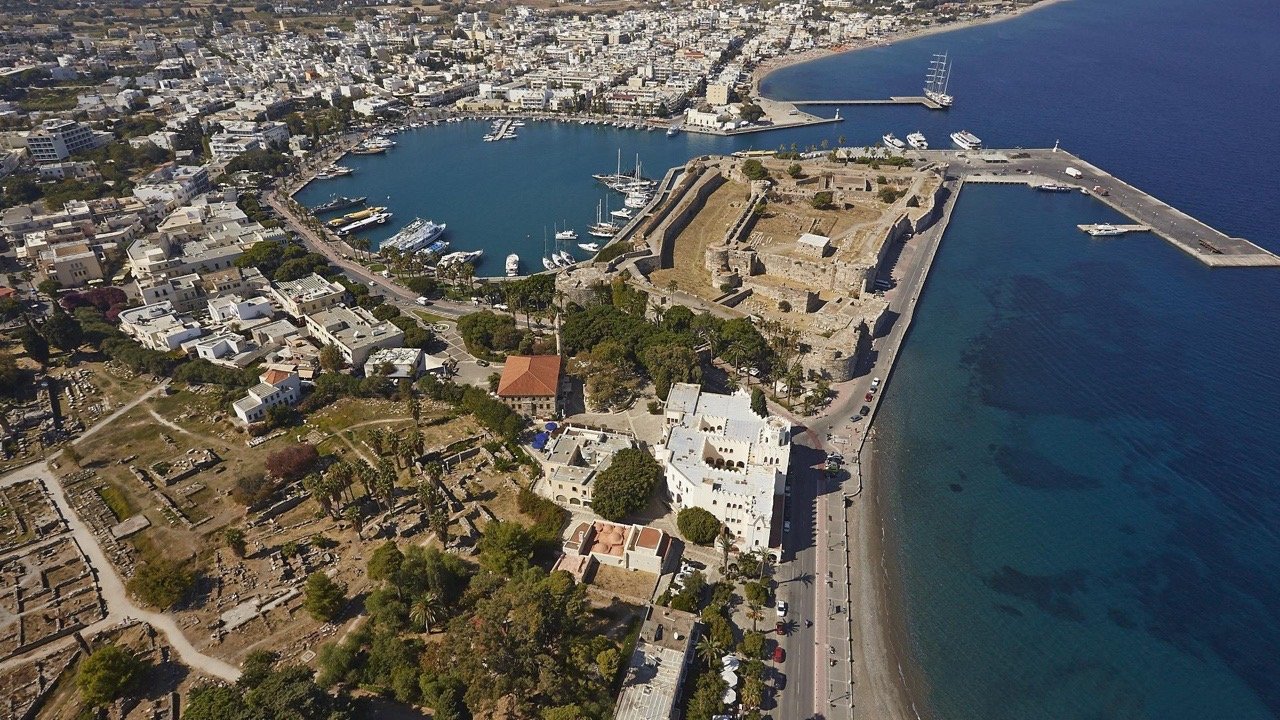
Patmos
Patmos is a seductively pleasant holiday destination. It appeals in equal doses to the culturally inclined, the religiously motivated, gastronomes and sun-worshippers, shoppers, yachties, bookaholics, and travelers simply seeking to unwind. Patmos is a place of pilgrimage for both Orthodox and West Christians, for it was here that Saint John wrote his divinely inspired revelation (the Apocalypse). The immense Monastery of Saint John the Theologian crowns the island of Patmos and a little way along you can also visit the Monastery of the Apocalypse, built around the cave of St. John. Even though Chora is the capital of the island Skala is where the port is located and has a more vibrant center.
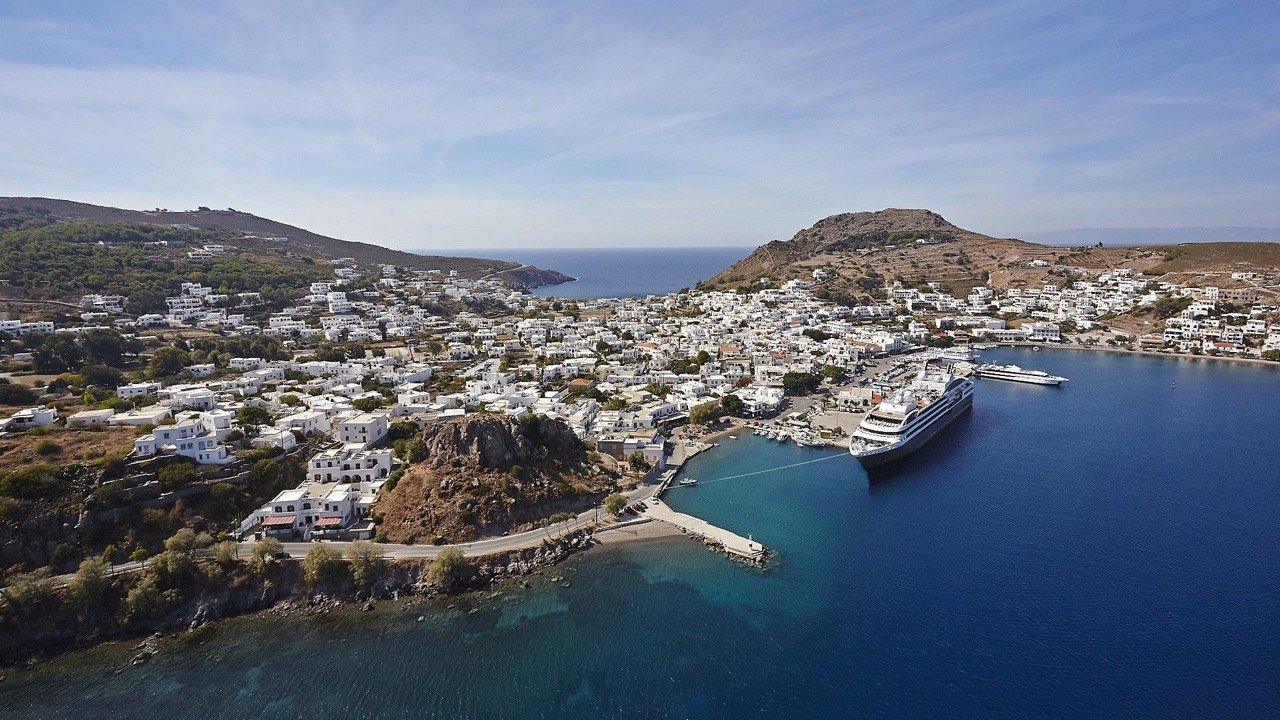
Rhodes
Rhodes is the largest island in the Dodecanese. The landscapes vary from arid and rocky around the coast to lush and forested. The World Heritage-listed Old Town of Rhodes stands as the largest inhabited medieval town in Europe, and its mighty fortifications are the finest surviving example of the defensive architecture of the time. The whole town is a mesh of Byzantine, Turkish and Latin architecture with quiet twisting alleyways punctuated by lively squares. Speaking of… you can visit Marmaris/Turkiye from Rhodes by ferry and crossing takes only 2,5 hours. From castles to temples, churches to monasteries, and from spas to natural springs, Rhodes offers a total package. Visit the bay of Anthony Quinn it’s breathtaking and just extraordinary.

Symi
Symi lies within the geographical embrace of Turkiye, 10km from the Turkish peninsula of Datça. It has a long tradition of both sponge diving and shipbuilding. The island has a scenic rocky interior with pine and cypress woods and a coastline with precipitous cliffs and numerous small bays with pebbled beaches. Gialos, Symi’s port town is a Greek treasure. Neoclassical mansions in a harmonious medley of colors are heaped up the steep hills flanking its U-shaped harbor. Horio meaning above is crowned by the Kastro (castle). There are some great hiking paths on the island, to explore more than the narrow, labyrinthine streets and alleys. Symi is not famous for its sandy beaches but offers great bays with a few sunbeds and umbrellas. Find the famed windmills of Patmos and enjoy the lovely skyline.

The Ionian Group, known in Greek as the Heptanisa or ‘the Seven Islands’ consists of seven main islands anchored in the Ionian Sea: Corfu, Paxi, Kefallonia, Zakynthos, Ithaki, Lefkada, and Kythira. The islands differ from other island groups; they are more reminiscent of Corfu’s neighbor Italy, not least in light and their colors are mellow and green compared with the stark, dazzling brightness of the Aegean. The islands do not experience the Meltemi and as a result, they can be extremely hot in summer.
The culture and cuisine of each Ionian Island are unique and differ from the Aegean islands and Crete.
Corfu
Corfu is the second-largest and greenest Ionian Island and the best known. In Greek the island’s name is Kerkyra. With the highest rainfall, it’s also the nation’s major vegetable garden and produces scores of herbs. Corfu’s Town is listed among the UNESCO World Heritage Monuments. The Old Town is in the northern section between the Spianada and the New Fortress to the west. Corfu has many interesting museums; the Archaeological Museum, the Museum of Asian Art, the Byzantine Museum, and more. Do not forget to visit the Church of Agios Spyridon and the Church of Saint George, Angelokastro, Cape Drastis, Canal d’Amour, and Old Perithia. Corfu’s best beaches are on the west coast.

Ithaki
Ithaki is separated from Kefallonia by a strait only 2 km to 4km wide. The unspoiled island has a harsh, precipitous east coast and a soft green west coast. The interior is mountainous and rocky with pine forest pockets, cypresses, olive groves, and vineyards. Ithaki has a few sites like the Fountain of Arethousa, the Cave of the Nymphs (ideal for hiking), Agia Panagia church with beautiful Byzantine frescoes, Moni Katheron monastery, and lovely small fishing villages. Ithaki has a variety of small beaches, and mostly are pebbled in combination with crystal clear waters. For mythical hero Odysseus, Ithaki was the home he left to fight the Trojan Wars. According to Homer, it took Odysseus 10 long years to return home to Ithaki.
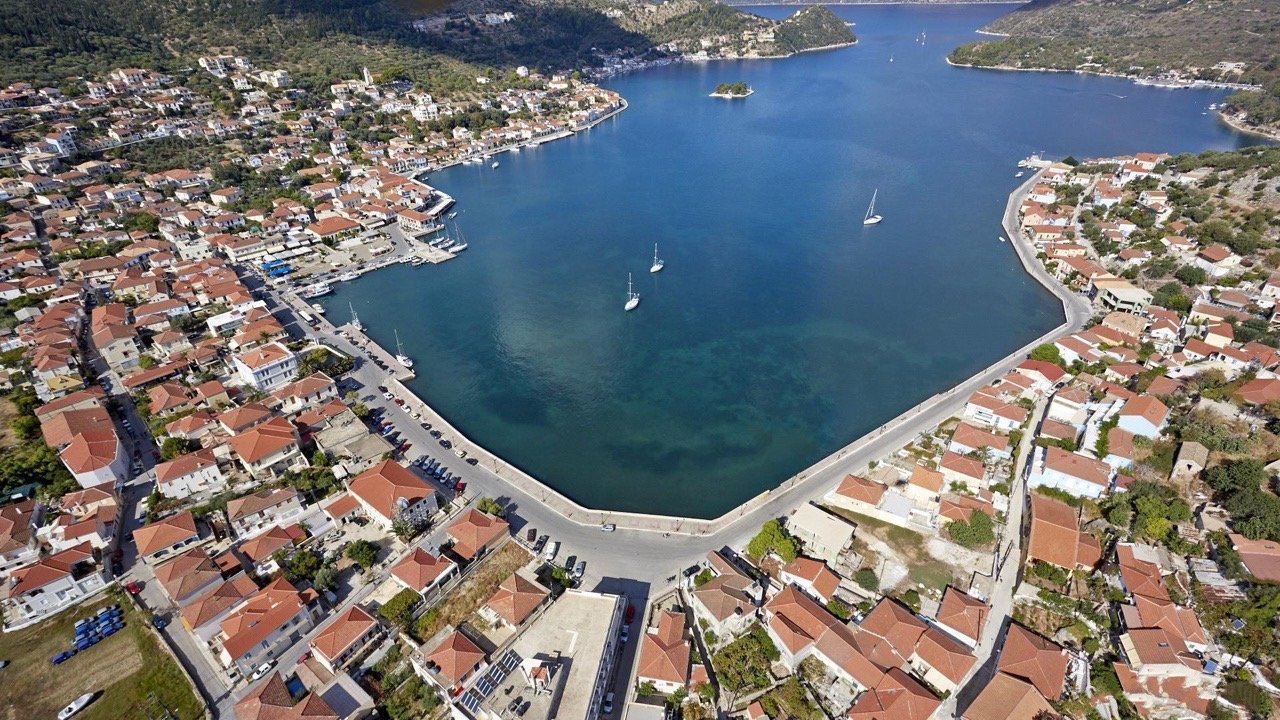
Kefalonia
Kefalonia, the largest of the Ionian Islands, has rugged, towering mountains. The highest Mountain Enos (1627m) is the Meditteraenean’s only mountain with a unique fir forest species, Abies Cephalonica. The island has many species of heavily scented herbs and wildflowers. Kefalonia has 6 ports; Sami, Argostoli, Poros, Lixouri, Pesada and Fiskardo. Around Sami, you should visit the Mellisani Cave (a subterranean seawater lake), and the large Drogarati Cave. Fiskardo, framed by cypress-mantled hills, and with fine Venetian buildings, is just gorgeous. The stunning beaches of Myrtos, Petani, Antisamos, Skala, and Xi are favored by many tourists. Hiking, diving, horseback riding you name it, Kefalonia has it all!
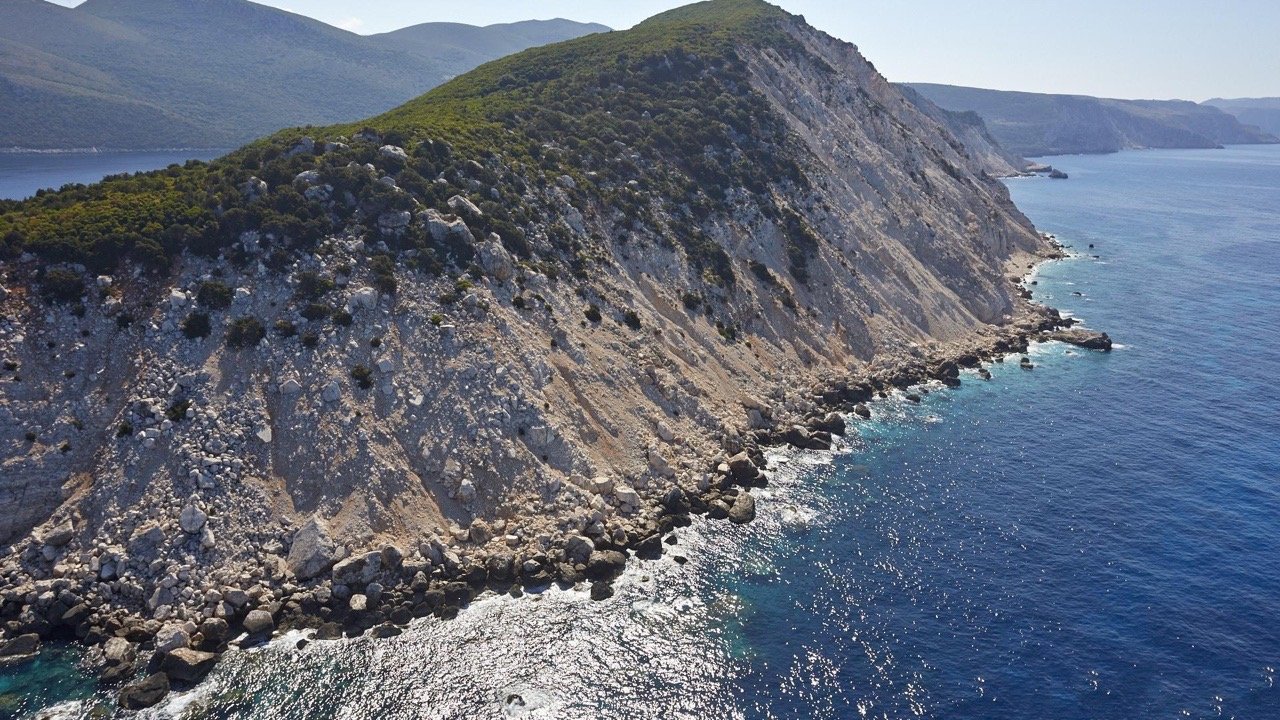
Lefkada
Lefkada is joined to the mainland by a narrow canal, its 25m strait is spanned from the mainland via a long causeway and floating bridge. Lefkada is mountainous with several peaks over 1000m and therefore ideal for hiking lovers. It is also fertile, well-watered by underground streams, with cotton fields, acres of dense olive groves, vineyards, fir, and pine forests. Anyone interested in windsurfing and/or catamaran sailing should head straight to Vasiliki. Vasiliki bay is one of Europe’s best windsurfing locations. The Nydri waterfalls are a pure natural beauty and just breathtaking. Not only is Lefkada famous for its golden white sandy beaches, but it also has a few sites worth visiting. The Castle of Agia Mavra, Church of Agios Ionassis Antzoussis.

Zakynthos
Zakynthos has inspired many superlatives. It is an island of exceptional natural beauty and outstanding beaches. The famous Shipwreck Beach (Navagio), is at the Northwestern tip of the island. It truly is a splendid beach with crystalline, aquamarine waters. The loggerhead turtle (Caretta Caretta) is one of Europe’s most beautiful yet most endangered marine species. Zakynthos hosts the largest congregation of nests with an average of 1300 nests per year along the 5km stretch of the Bay of Laganas on the island’s south coast. Around the island, there are many breathtaking caves and natural arches that are only reachable by yacht or boat. The Anafonitria Monastery and Panagia Skopiotissa Monastery, Agios Dionisios Church, the Byzantine Museum, and the Museum of Solomos are for those who seek the history and culture of the island.

The North-Eastern Aegean islands are grouped more for convenience than for any historical, geographical, or administrative reason. Apart from Thasos and Samothraki, they are like the Dodecanese much closer to Turkiye than to the Greek mainland. Unlike the Dodecanese, the islands are not close to one another. Although these islands are less visited than either the Dodecanese or the Cyclades. Scenically they also differ from these groups. Mountainous, green, and mantled with forests, they are ideal for hiking but most are also blessed with long stretches of delightful beaches. Some of the North-Eastern Aegean islands also boast important ancient sites.
Chios
Chios is a large island covering 859 square km. It is separated from the Turkish Karaburun Peninsula by the 8km wide Chios Straits. The mastic villages of the south and their role as a stepping stone to Turkey is what primarily brings travelers to Chios. The town of Chios on the east coast is the island’s port and capital. It’s a large settlement home to almost half of the island’s inhabitants. The atmospheric old quarter, with many Turkish houses built around a Genoese castle, and the lively market area are both worth the stroll. Visit the Nea Moni Monastery (World-Heritage listed), the Philip Argenti Museum with the Korais Library, Anavatos the abandoned ghost village, the unique Pyrgi village, and many churches and caves.

Ikaria
Ikaria is a rocky and mountainous island that is fertile, with an abundance of cypress trees, pine forests, and olive and fruit trees. The name Ikaria originates from the mythical Icarus. Another myth ascribes the island as the birthplace of Dionysos, the Greek god of wine, fruitfulness, and vegetation. Ikaria’s beaches at Livadia and Mesahti, near Armenistis on the north coast, are rated as the best in Greece. The Stone Houses, Agia Irini, the island’s oldest church, the Temple of Artemis, the Byzantine Castle of Koskina, and the Tower of Drakano are interesting sites on the island. The radioactive hot springs of Ikaria have been known for their healing properties since ancient times and attract many visitors. No wonder the locals are known for their longevity!
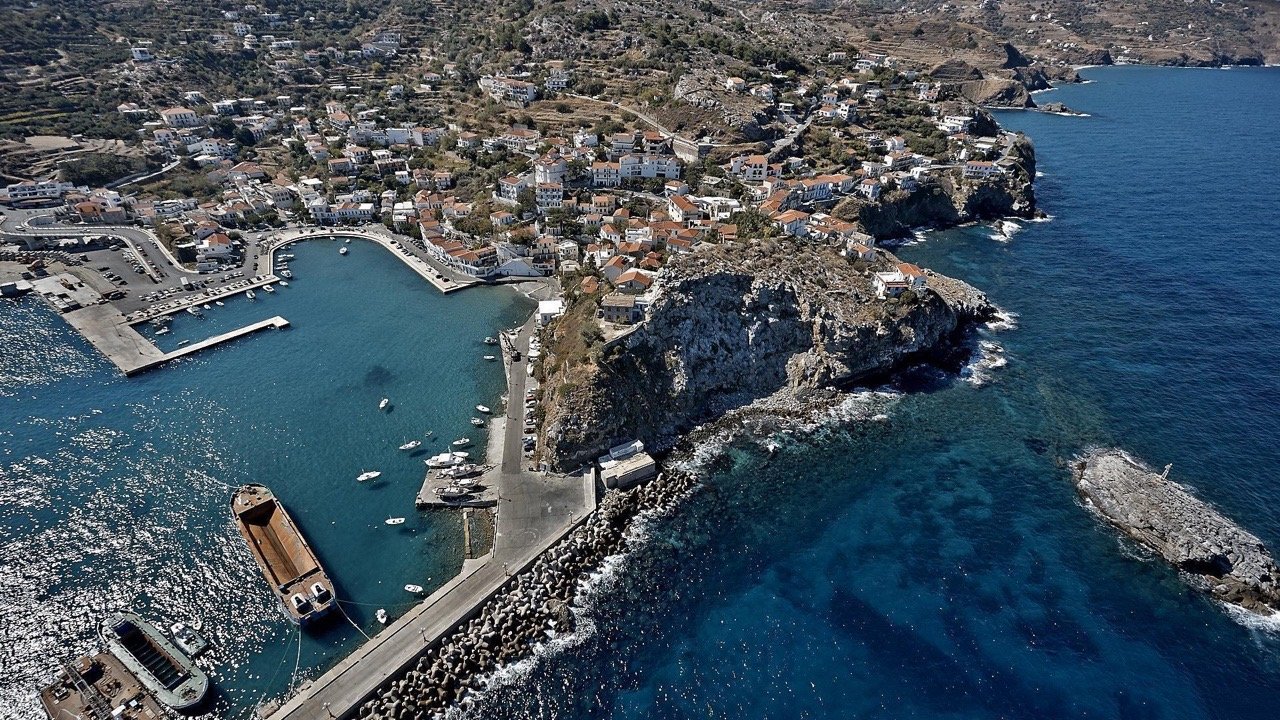
Kastellorizo
Kastellorizo is so-named for the ‘red castle’ that once dominated the main port but is also known as ‘Megisti’ meaning the largest. It is the largest of a group of 14 islets. There are no stunning beaches, but there are rocky inlets from where you can swim, cliff dive, and snorkel. The most spectacular ‘Blue Cave’ of Kastellorizo is known for its rich collection of stalactites. The island featured in the Oscar-winning Italian film Mediterraneo (1991) which made it favored and known for its harbor. On top of the hill stands the Knights of Saint John Castle (Castello Rosso) with nearby the Lycian Tomb. Moni Agiou Georgiou and Moni Agiou Stefanou are beautiful monasteries worth visiting. Do not forget the island’s ancient capital of Paleokastro. Within its Hellenistic walls are an ancient tower, a water cistern, and three churches waiting to be explored.

Lesbos
Lesbos is the third largest island in Greece. Most Greeks call the island Mytilini, also the name of the capital. Lesbos produces the best olive oil in Greece and has many olive oil refineries. Aside from olive oil, the island is famous for its Ouzo, its sardines, and Ladotyri (sheep’s milk cheese). Lesvos has some nice trekking trails in the north and south and is the transit point and home to over 279 species of birds ranging from raptors to waders. In July and August, the villages of Lesbos hold Festivals in honor of their church. The island offers many sights like Mytilini’s imposing castle, the Dome of the Church of Agios Therapon, Theophilos Museum and Teriade Museum, many hot springs, the Genoese Castle, Panagia Glykophilousa Church, the Petrified Forest, and many beautiful beaches.

Samos
Samos is the closest of all the Greek islands to Turkey and at the same time is the most visited island in the Aegean Group. Samos has three ports: Vathy and Karlovasi on the north coast, and Pythagorio on the south coast. The island counts around 45 hiking paths due to its natural fecundity and appealing combination of mountains and sea. The Ireon is a UNESCO World Heritage Site along with Pythagoreion. In the area of Polykratous, you can find the Evpalinos Tunnel, Moni Panagias Spilianis monastery, the Castle of Lykourgos Logothetis, Pythagorio Museum, and the ruins of Aphrodite. The fishing village of Kokkari is favored by windsurfers and attracts many tourists. Not only Kokkari, Livadaki, Lemonakia, Psili Ammos and Tsamadou are loved beaches of Samos.
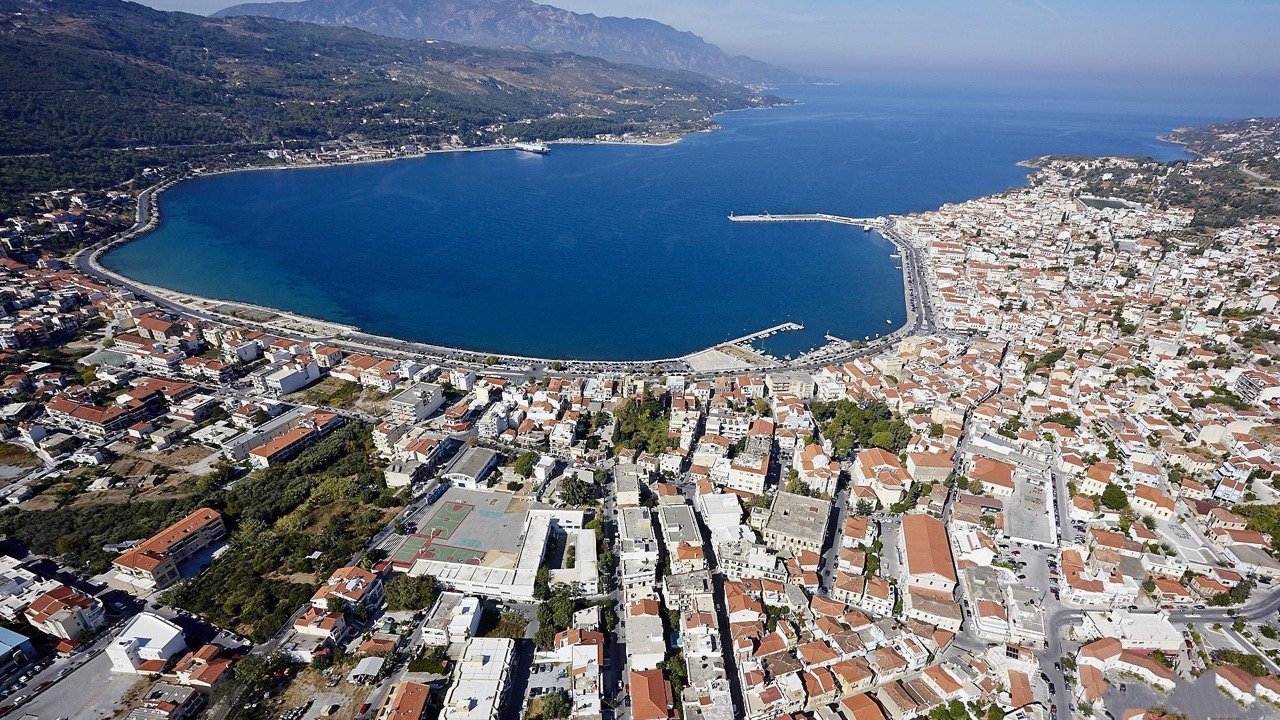
The five Saronic Gulf Islands are the closest group to Athens. The Saronic Gulf is named after the mythical King Saron of Argos, a keen hunter who drowned while pursuing a deer that had swum into the gulf to escape. Highlights are the rambling ruins of the old town of Paleohora on Aegina, views over the Saronic Gulf from the Temple of Aphaia on Aegina, and exploring the backroads of Spetses by motorcycle. Spetses has the best beaches, but these islands are not the place to be if you want long stretches of golden sand. And except for the Temple of Aphaia on Aegina, the islands have no significant archaeological remains. Nevertheless, the islands are a popular escape for Athenians.
Aegina
Aegina is the closest of the Greek Islands to Athens. Aegina Town is located on the west coast and is the island’s capital and main port. A column is all that’s left of the 5th century Temple of Apollo, which once stood on the Hill of Koloni. The site, on the far side of the town beach also has a museum. The splendid well-preserved Doric Temple of Aphaia a local deity of pre-Hellenic times is the major ancient city of the Saronic Gulf Islands. The ruins of Paleohora are fascinating to explore as well the Monasteries of Moni Agiou Nektariou and Moni Hrysolentissas. The Pistachios of the island are extremely delicious they gained European Union Protection. Do not forget to enjoy the crystal-clear blue waters of Aegina.

Dokos
Dokos is a small island of the Saronic Gulf, between Hydra, Spetses, and the mainland coast of the Peloponnesus. The landscape of the island is rocky and mountainous, reaching a height of 308 meters, and is therefore ideal for hiking lovers. In 1975 there was a huge discovery of a wreck near Dokos that has been dated around 2700-2200 BC and is the oldest underwater shipwreck known! On the east side of the island lie the ruins of a great Byzantine Venetian Castle. Not only has the island historically a few sites to offer, but also let us not forget the breathtaking views and the perfect turquoise-colored waters. Dokos is a very popular stop for yachts.

Hydra
Hydra is the Saronic Gulf Island with the most style. The gracious white and pastel stone mansions that line the hills around Hydra Town’s beautiful harbor are a reminder of the days in the 18th and 19th centuries when Hydra ruled the waves in the Mediterranean. Hydra has no motorized transport except for sanitation and construction vehicles. Donkeys (hundreds of them) are the only means of transport. The name Hydra suggests the island once had plenty of water. Hydra has many walking paths where you can easily visit some monasteries like the Moni Profiti Ilias, Moni Efpraxias, Moni Zourvas, Moni Agias Triadas, and Moni Agios Nikolaos. The pebble beaches of Hydra are in Mandraki, Kamini, and Vlyhos.

Poros
The island of Poros is little more than a stone’s throw from the mainland. Poros has few places of interest and its beaches Kanali Beach, and Neorion Beach are fine. The best beach is located at Russian Bay, 1.5 km past Neorion. The 18th century Moni Zoödohou Pigis on Kalavria has a beautiful gilded iconostasis from Asia Minor. There is not much left of the Temple of Poseidon, but the walk is worthwhile for the scenery on the way. Poros Town is the island’s main settlement, a pretty town of white houses with terracotta-tiled roofs, and there are wonderful views over to the mountain of Argolis. The Peloponnesus mainland opposite Poros can easily be explored from the island. The celebrated citrus groves of Lemonoadassos and the Ruins of ancient Troizen are worth visiting.

Spetses
Pine-covered Spetses is the most distant of the group from Piraeus. The island was known in antiquity as Pityoussa (meaning ‘pine-covered’). The pine-covered hills that greed the visitor today is a legacy of the wealthy philanthropist Sotirios Anargyrios. He bought two-thirds of the then largely barren island and planted the Aleppo pines that stand today. No cars are permitted on the island. The old harbor is a delightful place to explore. It is ringed by old Venetian buildings and filled with boats- from colorful little fishing boats to luxury cruising yachts. Spetses Town has a few museums worth the visit, including the beautiful mansion of Lascarina Bouboulina. Spetses coastline has numerous coves with small, pine-shaded beaches.

The Sporades lie to the North and east of Evia and the east and southeast of the Penlion Peninsula, to which they were joined in prehistoric times. With their dense vegetation and mountainous terrain, they seem like a continuation of this peninsula. The name the Sporades means ‘scattered ones’. There are 24 islands in the archipelago, four of which are inhabited: Skiathos, Skopelos, Alonissos, and Skyros. The first two have a highly developed tourist industry, whereas Alonissos and Skyros are far less visited, and herewith retain a more local and pure character. With their history and sites, marvelous golden beaches, and crystal-clear blue waters they are the perfect spot for discovery and relaxation.
Alonissos
Alonissos is a green island with pine and oak trees, mastic and arbutus bushes, and fruit trees. The west coast is mostly precipitous cliffs but the east coast is speckled with pebbled beaches around Kalamakia and Steni Vala. The water around Alonissos has been declared a Marine Park and is the cleanest in the Aegean. Its prime aim was the protection of endangered Mediterranean monk seals, but also the preservation of other rare plants and animal species threatened with extinction. Alonissos is surrounded by eight uninhabited islets, all of which have rich flora and fauna. The island is recommendable for hikers and snorkeling and diving lovers.

Kyra Panagia
Kyra Panagia also called Pelagonisi, is the largest of the uninhabited islands of the Sporades with two natural harbors Agios Petros and Planitis. This beautiful island was named after the Monastery of Kyra Panagia located on the east coast of the island. The Byzantine Monastery dating from the 16th-century lies on top of a hill with an amazing view. Within the walls of the Monastery is a church located dedicated to the Virgin Mary where also the remains of an old olive oil press and flour mill can be seen. Kyra Panagia is part of the Natural Park of Alonissos and has a coastline of tall rocky cliffs and low rolling hills. To enjoy nature and its tranquility, Kyra Panagia is a hidden gem of the Sporades.
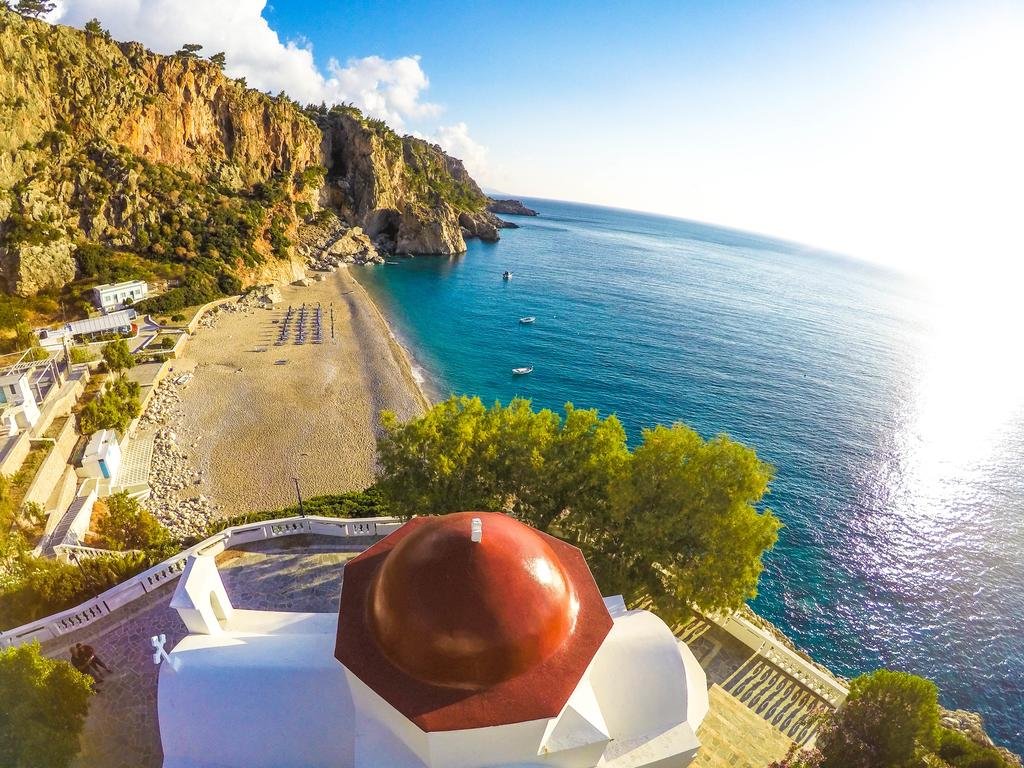
Skiathos
Skiathos coast is covered with pine trees and blessed with exquisite beaches of golden sand. The island has only one settlement the port, and the capital of Skiathos Town on the southeast coast. Most people come to the island for the beaches and nightlife but the truly curious will discover some picturesque walks, hidden valleys, and even quiet beaches. Skiathos was the birthplace of the well-known Greek poet Alexandros Papadiamantis and novelist Alexandros Moraitidis. Papadiamantis house is now a museum. The Evangelistria Monastery, Agios Nikolaos Church and Clock Tower, Kastro, and Skiathos Old Town are ideal for history seekers. Windsurfing, diving, and water sports activities are offered everywhere.

Skopelos
Skopelos is a beautiful island. It is heavily pine-forested and has vineyards, olive groves, and fruit orchards. It is noted for its plums and almonds, which are used in many local dishes. Even though Skopelos is a small island there are around 300 churches, chapels, and monasteries. There are two large settlements: the capital and main port of Skopelos Town on the east coast and the lovely unspoiled hill village of Glossa, the island’s second port. Skopelos Town is one of the most captivating towns in the Sporades. The Venetian Castle of Skopelos can be visited but not much is left apart from the walls. The amazing scenery will be more satisfying with a view over the town and Mount Palouki.

Skyros
Skyros is some distance from the rest of the group and differs topographically. The island reminds you more of the Cyclades than the Sporades. Almost bisected its northern half has rolling, cultivated hills and pine forests, but the largely uninhabited South is barren and rocky. The wild Skyrian pony is a breed unique to Skyros. The ponies used to roam freely but are now almost extinct. Skyros Town has two museums: the Archaeological Museum and the Faltaits Museum. The Byzantine Castle, Monastery of Agios Georgios, Church of Agios Nikolaos, the ancient site of Palamari, and the Grave of Rupert Brooke (famous poet) are a few of the sites you can visit on Skyros.
